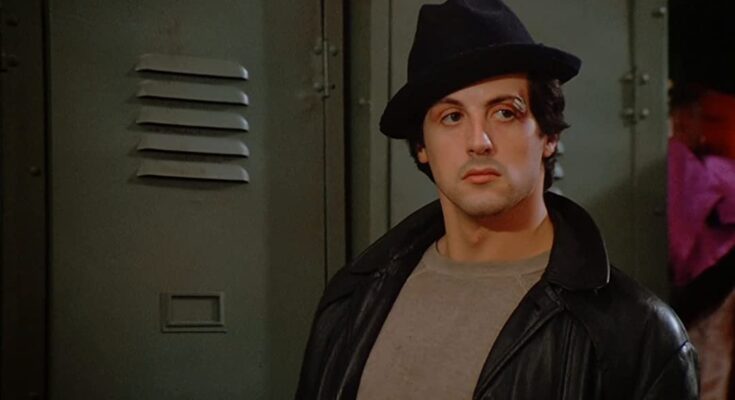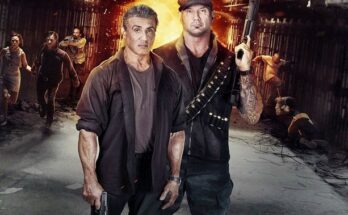“Rocky” (1976), directed by John G. Avildsen and written by its star Sylvester Stallone, is an inspiring underdog story that became one of the most beloved sports dramas in film history. Set in the gritty neighborhoods of Philadelphia, the film tells the tale of an ordinary man who seizes an extraordinary chance — and discovers his own worth in the process.

The story follows Rocky Balboa (Sylvester Stallone), a kind-hearted but struggling boxer who earns a meager living as a debt collector for a small-time loan shark. Though tough and resilient, Rocky is viewed as a “bum” by most people — a fighter who never lived up to his potential. His life is simple and lonely, revolving around the rundown boxing gym, his pet turtles, and his quiet affection for Adrian Pennino (Talia Shire), a shy woman who works at a pet store.

Rocky’s world changes when Apollo Creed (Carl Weathers), the charismatic and undefeated heavyweight champion of the world, faces a dilemma. His scheduled opponent is injured, and with an upcoming New Year’s Day bicentennial match, Apollo decides to turn the setback into a publicity stunt. He chooses to give an unknown local fighter a shot at the title — symbolizing the American Dream.
From hundreds of names, Apollo picks Rocky “The Italian Stallion” Balboa, thinking it will be an easy fight with great marketing appeal. For Rocky, however, this is a once-in-a-lifetime opportunity — not just to fight the world champion, but to prove to himself that he matters.

Rocky begins an intense training regimen under the guidance of Mickey Goldmill (Burgess Meredith), a gruff but wise old trainer who had long dismissed Rocky as a waste of talent. Their relationship starts tense but grows into mutual respect. Mickey pushes Rocky to his limits, and the now-iconic training montage — featuring Rocky running up the steps of the Philadelphia Museum of Art — symbolizes his determination and transformation.
Meanwhile, Rocky’s relationship with Adrian deepens. Despite her timidity and overprotective brother Paulie (Burt Young), Adrian finds strength and confidence in Rocky’s unwavering belief in her. Their love becomes the emotional core of the story, giving Rocky the courage to keep going.
As the big night approaches, Rocky realizes he can’t defeat Apollo — but he sets himself a different goal: to go the distance. No one has ever lasted the full 15 rounds with the champion, and if he can do that, he’ll prove to himself that he’s not “just another bum from the neighborhood.”
The climactic fight at the Philadelphia Spectrum is brutal and exhilarating. Apollo underestimates Rocky, and to everyone’s shock, the underdog holds his own, trading blow after blow. The match becomes a war of endurance, both men bloodied and exhausted. When the final bell rings, Apollo narrowly wins by split decision — but Rocky has achieved his dream.
As reporters swarm the ring, Rocky ignores them, calling out desperately for Adrian. She pushes through the crowd and rushes to him, crying, “I love you!” — and he says it back. The film ends not on victory, but on love, triumph of spirit, and the power of perseverance.
“Rocky” is not just a boxing movie — it’s a story about hope, resilience, and self-respect. It captures the essence of the American Dream: that success isn’t about winning, but about fighting for something that matters.
Made on a modest budget and featuring a then-unknown Stallone, the film became a cultural phenomenon. It won three Academy Awards, including Best Picture, and spawned a long-running franchise. Decades later, Rocky Balboa remains an enduring symbol of determination — the ultimate underdog who refused to stay down.



